1. Courtship and Rivalry
"Hence that male which at [the selection] time is in fullest vigour, or best armed with arms or ornaments of its species, will gain in hundreds of generations some small advantage and transmit such characters to its offspring…" (Charles Darwin 1842).
Attracting a Mate
Birds attract mates with elaborate and brightly coloured plumage grown especially for the breeding season ( See the chapter entitled "Bird Watch" for a few good examples). Some species woo potential partners with songs and sounds that also deter potential rivals. Others build nests and the females choose the best along with its builder. Many species have courtship displays which are in some cases spectacular and aimed to convince a female that they are the most energetic and well equipped potential partner carrying genes that will ensure a successful brood.
Grey-crowned Crane Mating Behaviour
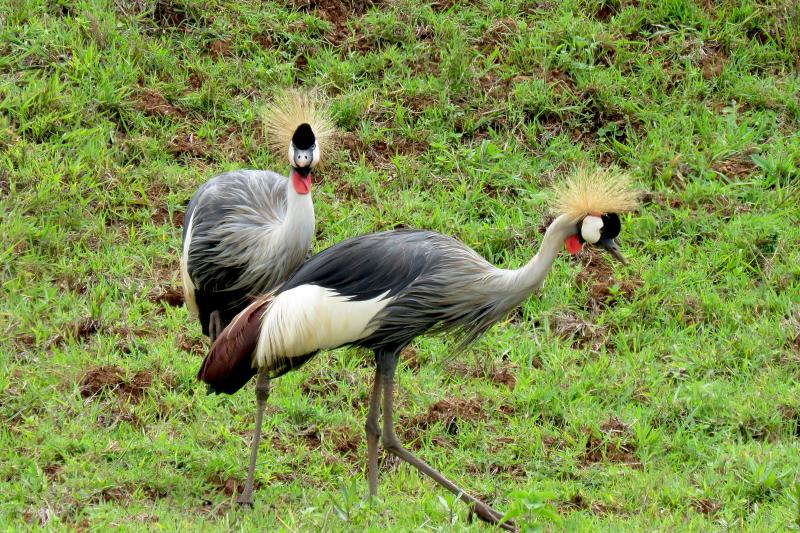
Grey Crowned Crane
During the breeding season, the exotic display of the grey crowned heron involves dancing, bowing, running and loud, booming calls that inflate the area around their necks (gular sacs). Heads are lowered to shoulder level as the calls are made. The breeding season lasts from around December to February during the rainy season. Both male and female select the nest site and build their nest together often close to wetland. Both parents share the incubation period of around 50 to 60 days. Grey crowned cranes are "monogamous" and retain the same partner for life. The pair above were photographed in the Kabale District of Uganda.
Peafowl Mating Behaviour
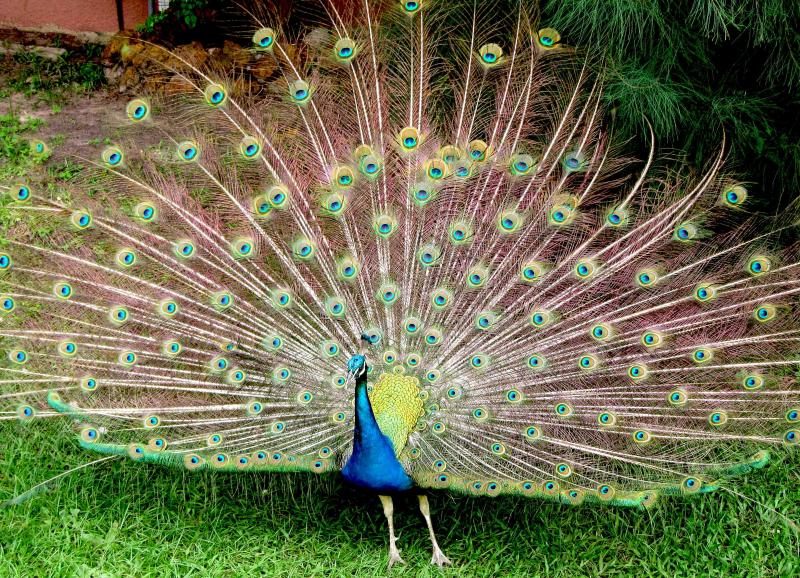
Indian Peafowl
Peahens appear to prefer peacocks with the most colourful and exaggerated display and field research has produced evidence that birds with the most eyespots are the most successful in attracting mates. Given the great handicap of such a heavy and cumbersome tail, both because it attracts predators and restricts the peacock's ability to escape predation, there must be some evolutionary advantage (see speciation section). Possibly only the healthiest and most vigorous can survive with such a handicap so the female chooses on this basis. There is some evidence that the more elaborate the male plumage, the better the survival rate for the offspring.
The Peafowl Lek
Unlike grey crowned cranes, peacocks are "polygamous" and will mate with several females in one season. A number of males often gather at a "lek" (breeding site). They allow several females to join them and don't drive other males away. The peacock struts around with "erectile plumage" in front of the female and vibrates the arched fan (seen in the picture above) which makes a ruffling sound. At first, the female appears disinterested and continue foraging.
Peafowl Nesting
After mating, the peahen lays 4 to 8 pale brown eggs in a shallow ground scrape lined with sticks and leaves and she incubates alone for around a month before the chicks hatch. Chicks are precocial and soon after birth are able to run and follow their mother. Chicks have been known to climb on their mothers' backs from where they are flown to safety in trees.
The splendid peacock above was photographed in the grounds of a resort in The Gambia where it was an ornamental species. The blue peacock originates in the Indian subcontinent.
Black-headed Heron Mating Behaviour
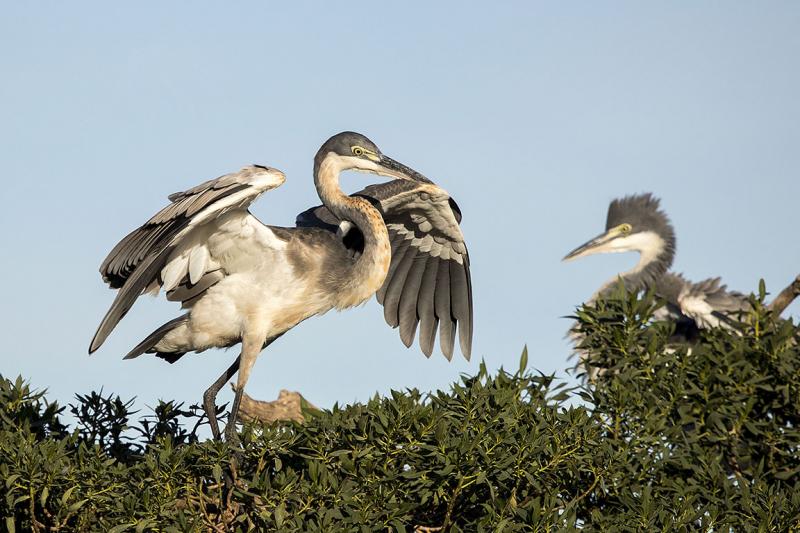
Black-headed Heron
The male black-headed heron above photographed on Thesen Island, Knysna, South Africa, is diplaying for the female who responds with erect crest.
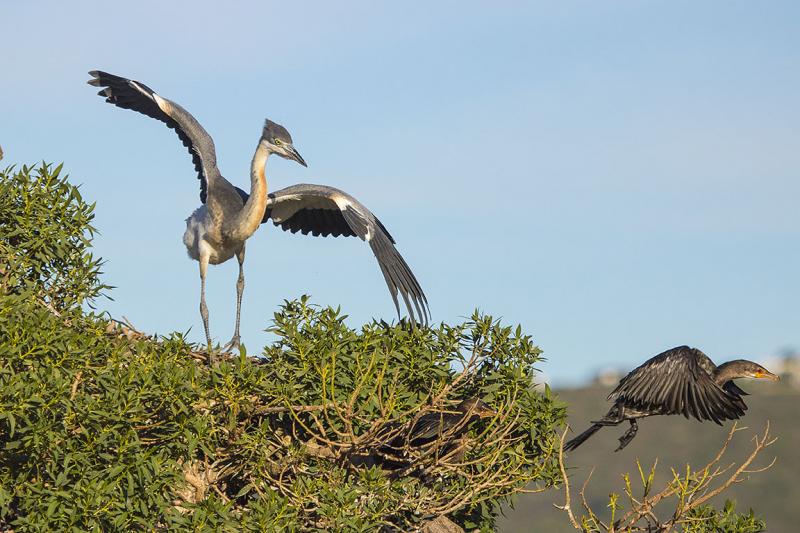
Black-headed Heron
Highly territorial, the same bird frightens off a neighboring reed cormorant.
Egret Mating Behaviour
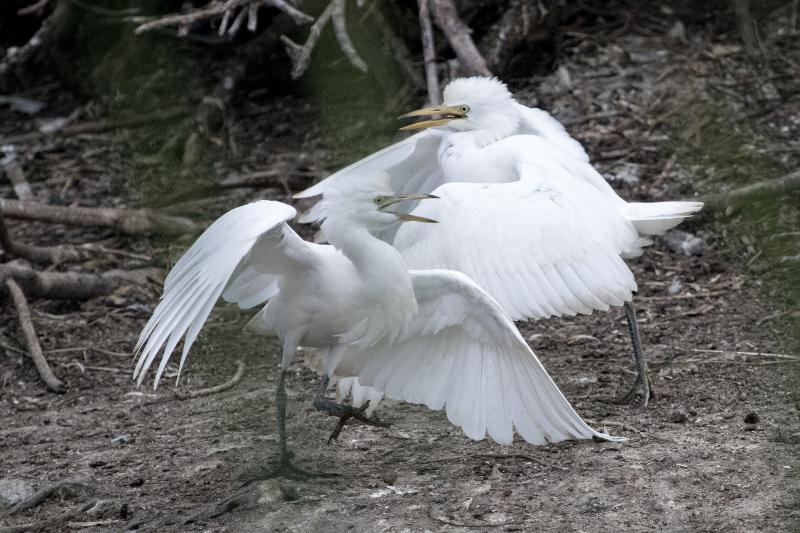
Cattle Egret
I watched from a hide a group of cattel egrets behaving manically on Thesen Island, Knysna, South Africa. I am still not sure if it was courtship display or aggressive rivalry or both. The view was obsured by reeds and grasses making a photographic record difficutl to obtain.
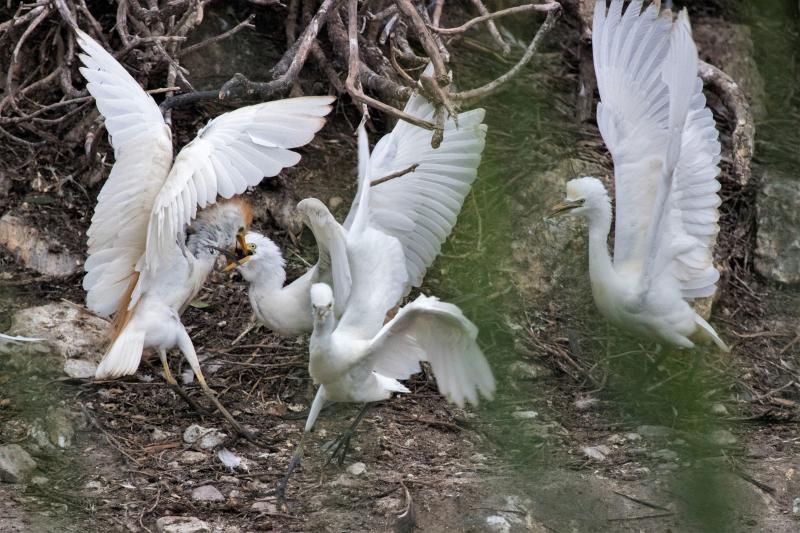
One of the birds had erectile plumage or "piloerection" with the orange breeding crest raised as in a courtship display or alternatively a show of aggression. I considered the possibility that adults were feeding demanding fledglings. A close study of the picture above seems to show a long piece of sodden, dead vegetation thrust into the mouth of the bird second from the left.
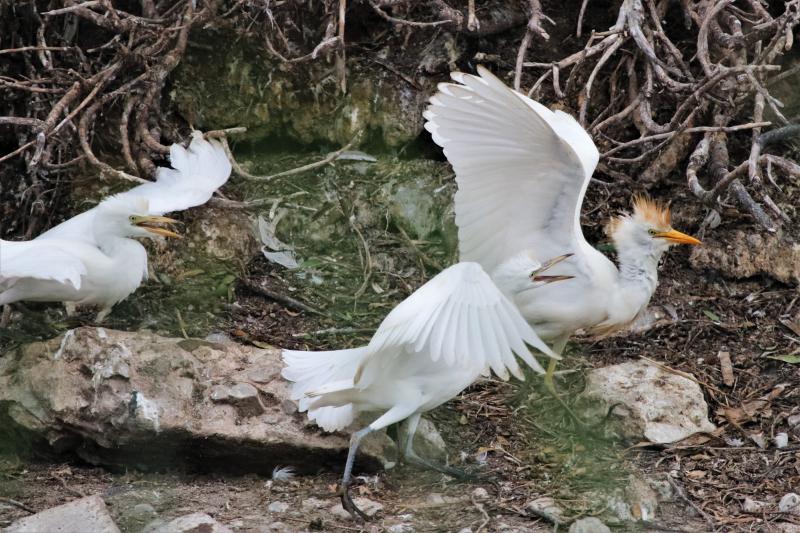
The bird on the right with erect orange crest seems to be engaged in a courtship display but why are the other two chasing him? Rivals? Or voracious fledglings? I suspect the former because a courtship display when feeding chicks seems incongruous. And the other two birds don't look like fledglings. Any help from other bird watchers would be appreciated.
Cattle Egret Nesting
The cattle egret often shares a nesting colony with other members of the heron family. It builds a platform of sticks in trees or shrubs and lays two to five eggs. The fact that couples aggessively defend breeding territory may be relevant to the scenes above. Both adults incubate two to five blue-green eggs for around a month. After hatching the elder chicks will often engage in "siblicide", killing and ejecting over the side of the nest, the youngest member of the brood with parents as disinterested spectators. This unpleasant survival strategy ensures that older, stronger members of the brood are sufficiently well fed. Cattle egrets are resident breeders in sub-Saharan Africa, the Indian subcontinent, Southeast Asia and Australia.
Asian Koel Mating Behaviour
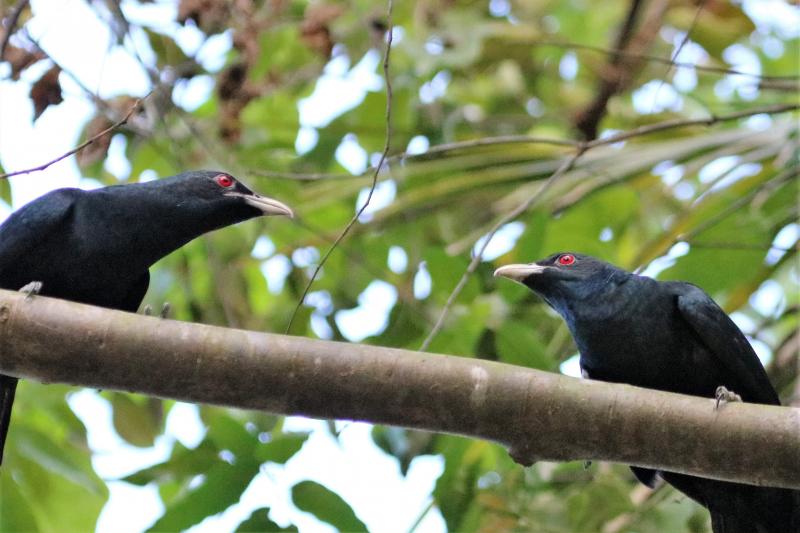
Asian Koel
There is palpable animosity between these two Asian Koels on Koh Phangan Thailand, rivals for a female or territory or both. Shortly afterwards it descended, literally, into an all out battle of beak and claw with broken twigs and scattered leaves as the two fell locked together through the branches to the ground at my feet.
Asian Koel - A Brood Parasite
A member of the cuckoo family and a "brood parasite", the asian Koel lays eggs in other birds' nests particularly the jungle crow and the house crow although in Penninsula Malaysia and Thailand they tend to prefer mynas. Sometimes pairs of koels work together with the male distracting the hosts while the female lays her egg which is usually a day or two after the host's first egg. The koel chick hatches around three days before the first host chick although up to 11 koel eggs have been recorded in one nest! A female koel sometimes removes an egg from the host's nest before laying her own. The new born koel chick only occasionally follows the cuckoo's instinct of evicting host eggs and chicks, perhaps because the host's nest is more spacious and young are larger than, for instance, those of the Eurasian cuckoo's hosts such as the reed warbler. Female koels occasionally feed their chicks in the hosts' nests.
The Asian Koel is a common bird and found across the Indian subcontinent and throughout southern China, and Southeast Asia. It is an adventurous bird and was one of the first to recolonise the volcanic island of Krakatoa after the major eruption in 1883.
Feral Pigeon Mating Behaviour

Feral Pigeon
The male feral pigeon is courting the female on a balcony in Bangkok by offering a twig for the nest she will construct if she accepts his overtures.
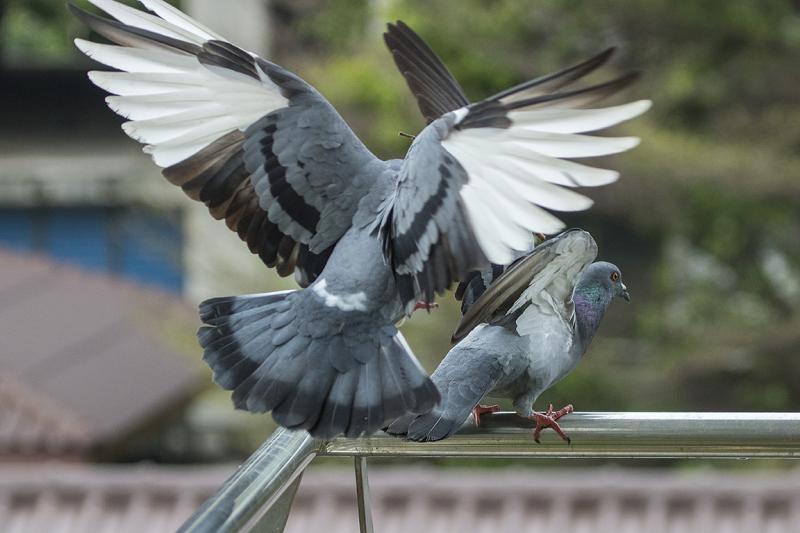
He is after something more than a pledge as is shown in this picture where he pounces impulsively with a hurried retreat by the female. Yet another inept male? More avian/human convergent evolution? See how it all works out in the bonding and nesting section.